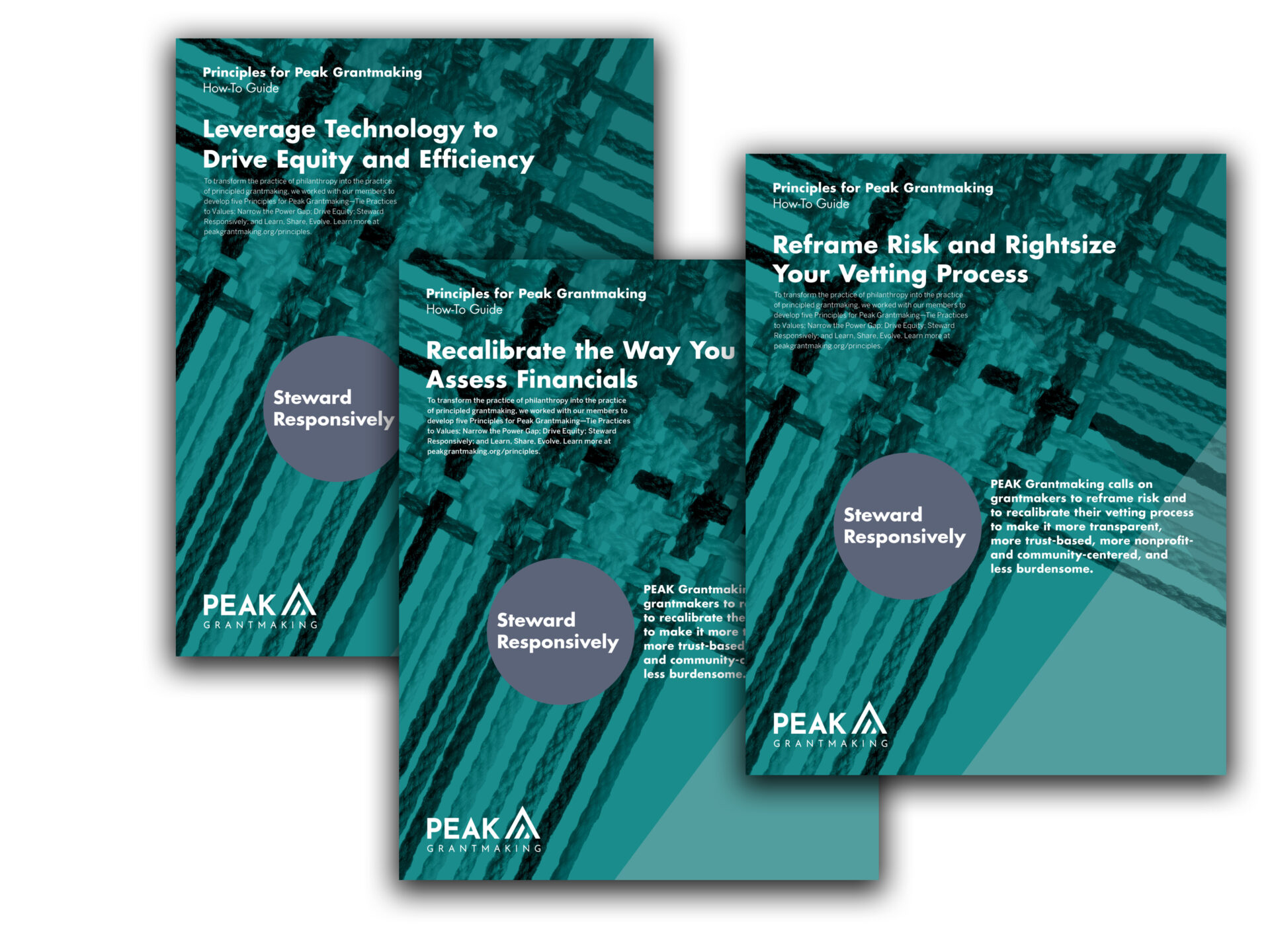
Intermediaries are a hot topic in philanthropy—and for good reason. Last October, theChronicle of Philanthropy’s annual list of the world’s biggest charities caused ripples when Fidelity Charitable Gift Fund—a charity that hosts donor-advised funds (DAFs), a type of intermediary—knocked longtime #1 United Way Worldwide off the top. As intermediaries grow, many across the sector are asking questions about what they do and whether their growth is good. These are important questions to ask, and not simple ones to answer—in part because the term “intermediary” encompasses many different types of organizations serving many different purposes.
Recently,GEO wrote a piece describing intermediaries as “regranters”; many in the sector have used similar terms, such as “middlemen,” to define intermediaries’ function. In this issue of the PEAK Insight Journal, we argue that intermediaries can be much more than “regranters,” and that this term oversimplifies what intermediaries often do. My firm, Arabella Advisors, manages three 501(c)(3)s and a 501(c)(4) that fiscally sponsor hundreds of donor-driven initiatives. Working on these platforms every day, we believe they are indispensable to the sector because they enable donors, beneficiaries, and other valuable parties to work together in ways that are otherwise prohibitively difficult or, in some cases, impossible. The intermediaries Arabella manages evolved entirely in response to donors who wanted to move faster, be bolder, and experiment with new approaches, and we have seen time and again that they expand the boundaries of what’s possible.
What Are Intermediaries?
Intermediaries are mission-driven organizations that aim to more effectively link donors (individuals, foundations, and corporations) with organizations and individuals delivering charitable services. They come in many forms: DAFs, giving circles, community foundations, fiscally sponsored pooled funds, fund aggregators, and social ventures. More donors are using intermediaries than ever before, with DAFs in particular seeing tremendous growth in the last three years.
Why Do We Need Them?
At their best, intermediaries serve functions that overcome obstacles that curtail the nonprofit sector’s effectiveness. They often:
Provide an operational backbone. Some nonprofits lack the resources to build their organizational capacity and effectiveness—particularly since many funders prefer that their grants go toward programmatic work rather than overhead. In other cases, charitable initiatives are time-bound—for example, campaigns aimed at influencing an election—and do not have time to start a new organization from scratch and wait to obtain 501(c)(3) status. Intermediaries can alleviate these problems by providing the full administrative infrastructure—financial management, grant execution, human resources, compliance oversight, etc.—so that program staff can focus on their mission.
Provide strategic capacity and expert guidance. Intermediaries often go far beyond regranting: many provide expertise and infrastructure that enable nonprofit initiatives to employ more sophisticated tactics than they could on their own. This includes providing an independent, third-party platform for complex projects with multiple donors; increased advocacy capacity; and the ability to deploy investment as well as grant capital. Moreover, intermediaries can help to build the capacity of hosted initiatives that decide to spin off into an independent entity.
Connect funders and grantees. Intermediaries often connect grantors and grantees who are otherwise unable to work together—because they are based in different countries, operate on different timelines, or face a variety of other practical or legal barriers to establishing a relationship. For example, many institutional foundations have fixed grant-making cycles. Intermediaries can be more nimble, making grants of all sizes in response to emerging situations. In enabling philanthropic dollars to reach a wider range of institutions, intermediaries can have a democratizing effect on a sector that tends to favor large, established nonprofits, partly for reasons that are purely logistical rather than merit-based.



